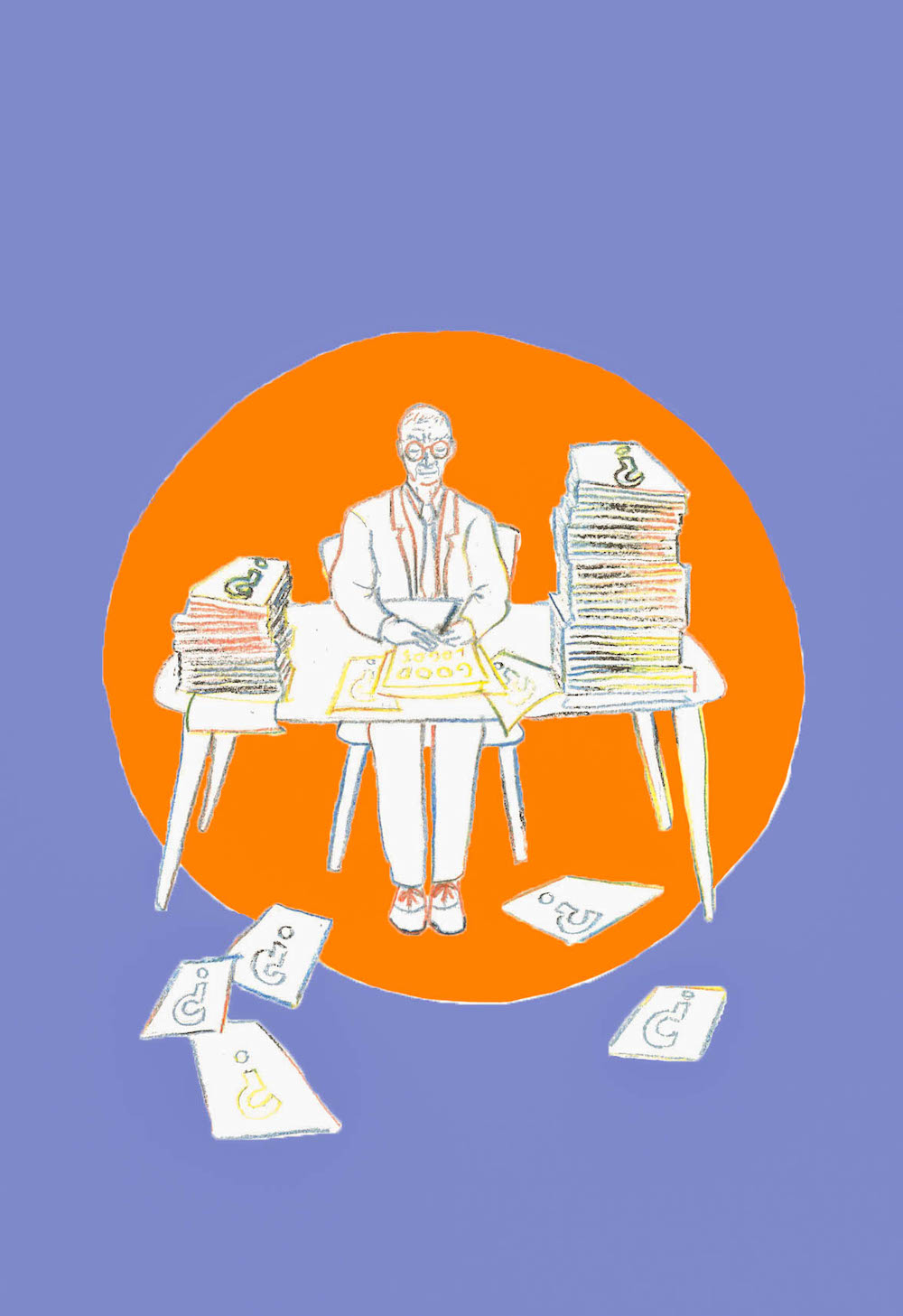
“It would seem that the ant works its way tentatively, and, observing where it fails, tries another place and succeeds.”
— Richard Jefferies
The world is a very different place from when I began working in graphic design and advertising a very long time ago. A major difference is that there are simply more companies, more creative people, more stupid executives and much, much more money.
I was a graphic designer at a number of New York City studios—not corporations. Back then it was possible to perform as an individual and receive individual credit. Maybe it’s a selfish desire. Even so, that time has long gone. For one of my trademarks for a Wall Street firm I received an award from the Art Directors Club. It was three thick green bars. All my logos are simple and geometric. Some were letters. Today, the geometry, which I called on, wouldn’t be accepted because it seems that every single geometric solution has been exploited—same as with simple domain names.
The other designer in the studio, besides me, was Eliot Schneider, who went on to open his own studio near Grand Central Station. He was the only person in a single room. One of his memorable logos was for Dunhill—a lowercase “d” in a circle.
He and I had two things in common. Much like all professionals, whether working in sports, literature or art, we practised and made mistakes, and we practised and made mistakes.
Paul Rand, best known for IBM, ABC American TV and UPS, worked alone, with no computer and no staff if I recall correctly. He lived in a commuting town near New York City. Very much like photographer Irving Penn, Rand responded to Steve Jobs, who requested options for a logo for NeXT: “No, I will solve your problem for you and you will pay me. You don’t have to use the solution. If you want options, go talk to other people.”
I always hated providing clients with a selection of solutions from which to choose because invariably they would choose the worst one.
If you are a graphic designer, fear not. You can still invent interesting work. Here are Paul Rand’s seven good-logo criteria questions:
1. Is it distinctive?
2. Is it visible?
3. Is it adaptable?
4. Is it memorable?
5. Is it universal?
6. Is it timeless?
7. Is it simple?
Good taste cannot be a criterion because I don’t think that Rand knew what it was. I certainly don’t. There are hundreds of books about it. I once said that 1950s design was in bad taste and would never have a fashionable resurgence. Now my apartment is filled with it.
Except for possibly an initial letter, most of the logos for sports teams are dreadful and often include images of mascots. Indeed, they define bad taste. Excellence is rare. Look at the graphic design in any newspaper; there is little excellence there. And who are the designers of mailbox advertising stuffers? It isn’t called junk mail for nothing.
I have had no training as a graphic designer, except as an adolescent with Speedball Pens for school posters. When I first began as a professional graphic designer in New York City, my solutions were all over the place. I designed brochures for a college-book publisher. On chemistry one week. On economics another. My approach wasn’t intelligent because I had to begin from nothing each time I tried to solve a problem. I was looking for variety—not a good approach. Then I had an epiphany. I found an aesthetic and placed the assignments into that basket—the basket in question was Swiss design. I flushed all texts left with a ragged right. I used only Helvetica and handled photos respectfully, never running type across them. This meant that I could consider deeper solutions, having handled the nuts and bolts. I didn’t then know about the king of Swiss design, Joseph Müller-Brockmann.
The likelihood of your being credited as the sole creator of a major brand’s logo has now passed. Firms with dozens of offices in as many countries have a raft of designers and executives, who sell the work to clients. So as a graphic designer, you must choose where to work if you haven’t already. Will you scratch away all by yourself in an atelier, join a small studio or be surrounded by a hundred cubicles exactly like yours? I saw the open-office condition in the 1990s at the Macy’s department store headquarters. The advertising/graphics department was a city-block large with tiny cubicles as far as the eye could see, reminding me of the office landscape in the 1960 film, The Apartment. I have experienced all conditions and never been successful as a team player. Nevertheless, studios with like-minded people around me—but not too many—were the most satisfying.
Of course, the only time I have ever felt absolute satisfaction in any job was when I had no job at all—being paid a severance for a year from a big advertising agency and staying at home.
Illustration by Rosalind Duguid





